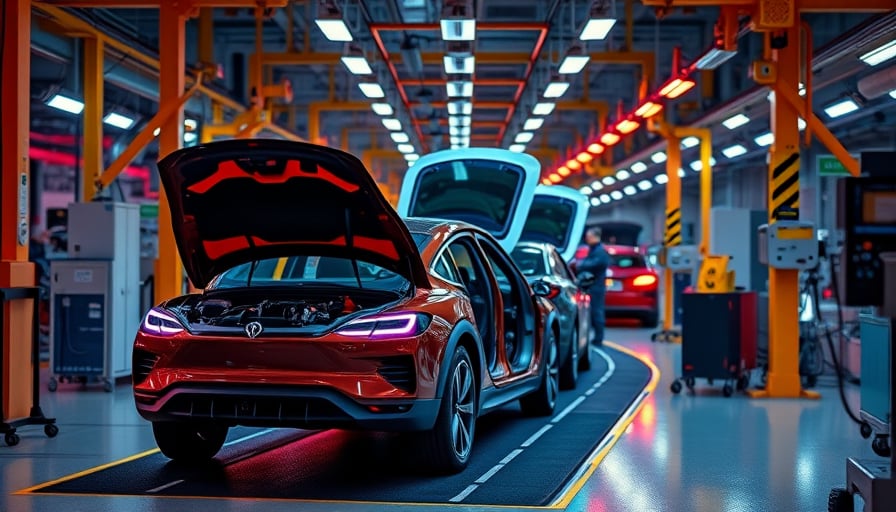Anhui Jianghuai Automobile Group Corp Ltd: A Financial Pulse in the Midst of New‑Energy Surge
The Shanghai‑listed automotive giant 600418 is currently riding a wave of unprecedented investor confidence, as evidenced by a 1.89 billion CNY financing‑purchase on 18 November. According to the Tonghuashun (300033) data centre, the company’s financing balance reached 111.86 billion CNY, representing 10.45 % of the circulating market value—a figure that surpasses the 90th‑percentile threshold historically recorded for the firm. This surge is not an isolated anomaly. The broader capital markets recorded a total financing balance of 24.744 trillion CNY on 17 November, up by 75.78 billion CNY from the previous day. Even Shanghai and Shenzhen markets each saw multi‑billion‑yuan increases, underscoring a sector‑wide appetite for leveraged investment.
Board Decisions and Governance
On 19 November, the company’s ninth Board of Directors meeting convened, culminating in a formal resolution (link to the PDF is provided in the source). While the resolution’s contents are not disclosed here, the mere fact of a board meeting—particularly during a period of heightened financing activity—signals that strategic decisions are underway to harness the momentum generated by the new‑energy boom.
New‑Energy Commercial Vehicle Market Context
The backdrop to Jianghuai’s financing surge is a rapid acceleration in new‑energy commercial vehicle (NECV) penetration. A recent commentary by Cui Dongshu highlighted that NECV penetration reached 33 % in October 2025, up from 25 % in October 2024, with 24 % for trucks and 72 % for buses. This 8‑percentage‑point jump eclipses the growth seen in passenger cars and positions the commercial‑vehicle sector as a pivotal driver of China’s green‑mobility agenda.
Over the first ten months of 2025, NECV penetration climbed from 27 % to 33 %, a trajectory that dovetails neatly with Jianghuai’s product portfolio—buses, trucks, commercial vehicles, and auto‑parts. The company’s exposure to this expanding market, coupled with its proven manufacturing base, creates a compelling narrative for investors who seek to capitalize on China’s transition to low‑carbon transportation.
Financing Dynamics: A Double‑Edged Sword
The 111.86 billion CNY financing balance that Jianghuai now carries is both a testament to market confidence and a reminder of leverage risks. At a price‑to‑earnings ratio of ‑27.65, the company’s profitability remains weak, raising the question: how will the firm convert financing inflows into sustainable earnings? The answer will hinge on:
- Execution of new‑energy projects—the company’s current focus on bus and truck electrification aligns with the 72 % bus penetration trend, offering a direct revenue corridor.
- Cost discipline—given the low P/E, any cost overruns could erode the thin margins typical of commercial vehicle manufacturing.
- Capital structure management—leveraged financing must be judiciously deployed to avoid an over‑leveraged balance sheet that could jeopardize long‑term solvency.
Market Sentiment and Investor Behaviour
The 10.45 % financing balance relative to market value is a quantitative signal of investor sentiment. It indicates that short‑term traders are willing to stake significant capital on Jianghuai’s near‑term upside, perhaps driven by expectations of a policy‑backed sales surge. Yet, the company’s negative earnings multiple suggests that such optimism may outpace fundamentals, creating a potential bubble if the new‑energy market fails to deliver the projected volumes.
Conclusion
Anhui Jianghuai Automobile Group Corp Ltd finds itself at the crossroads of a capital‑market‑fueled hype cycle and a technological shift toward electrified commercial vehicles. The company’s recent financing spike, coupled with a board meeting that presumably addresses strategic redirection, positions it as a focal point for investors bullish on China’s green‑mobility trajectory. However, the stark negative earnings ratio and the heavy reliance on leveraged financing underscore the need for vigilance. The coming months will reveal whether Jianghuai can translate market enthusiasm into sustainable profitability, or whether it will become another cautionary tale of over‑leveraged optimism in a rapidly evolving industry.




